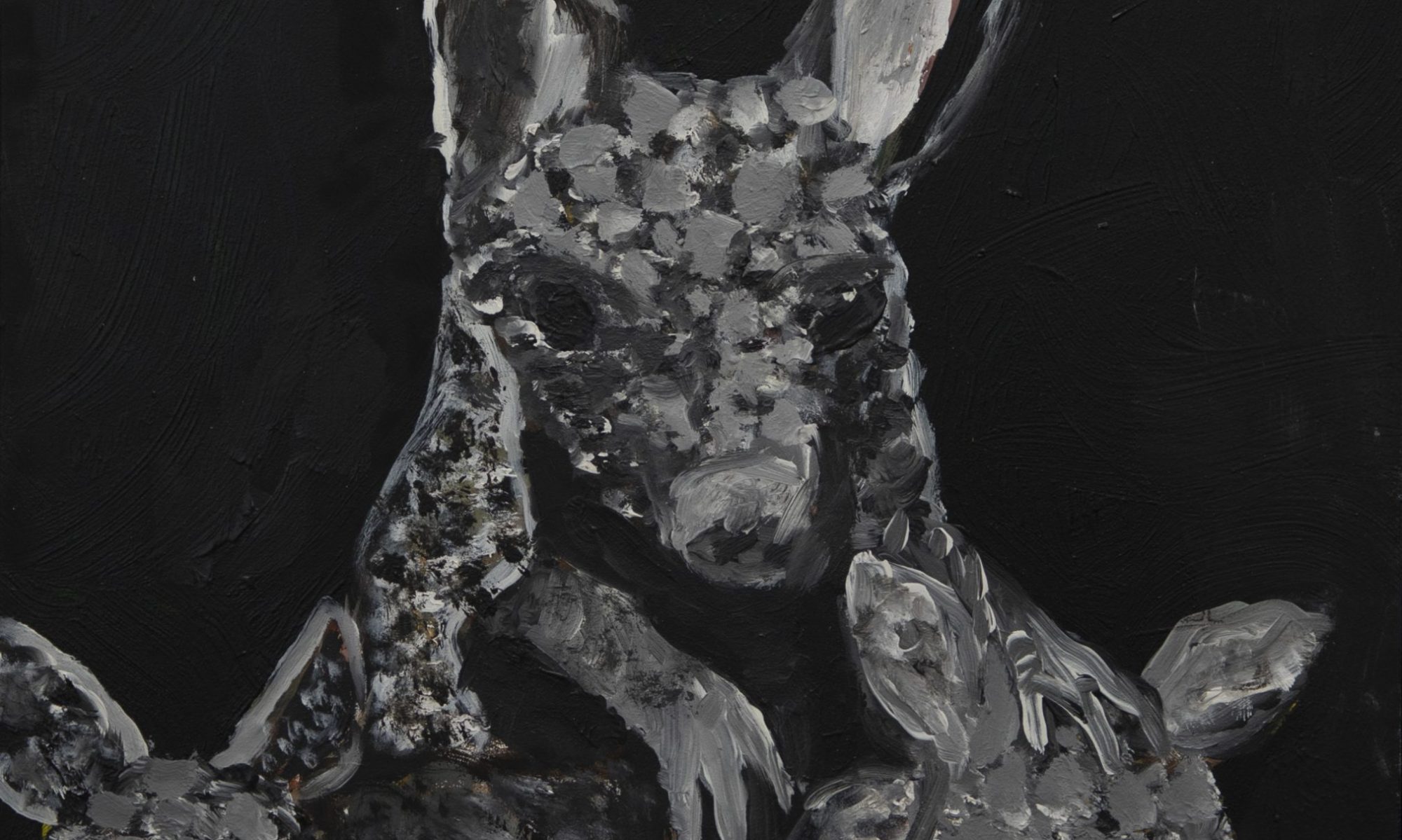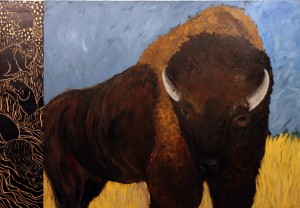I have lived and interacted with animals for my entire life. I got my first puppy when I was seven years old, raised an orphaned baby raccoon when I was a teenager, and animals continue to be integral to my life and art making.
Animals exhibit intelligence, natural beauty and adaptability; as the world around them changes, their habitat and physical traits evolve. The purity of their actions and reactions inspire me to use animals as subject matter.
My oil paintings are portraits of domesticated animals and wild animals, and sometimes refer to the predator-prey relationship, survival instinct, and extinction. Wild animals learn to fear humans while domesticated animals learn trust and dependency; my paintings investigate that distinction. I favor an expressionist approach and use energetic brush strokes to reflect the changing aspects of life.
60 WRD/MIN ART CRITIC AT THE BURNS BUILDING, BUFFALO, NY 11/11/16 2:30 PM
Polly Little
I do not love fables, preferring the inanimate elements of nature to be anthropomorphized. A talking rock beats a talking fox in my book. In Polly Little’s compositions, animals do not speak but they might as well, so intently do they occupy her painted canvases and carved wood blocks. The blocks are leftovers from the process of making prints, which Little exhibits as well, and normally they are just that, leftovers. Little does something novel with them that also feels novelistic, recalling the style of Swedish children’s book author Jan Brett. Affixed to the tops of same-size canvases, the blocks act as side-stories, bringing different animals in different registers together into the same tale: ram, rooster, and aye-aye join with gecko, bison with beaver. What’s the moral? They make fine prints too, including a witty one of those notorious wood chompers, beavers, who might have had a hand—or tooth—in making their own picture.
—Lori Waxman

